
SaaS Management Platform vs SAM Tool: What’s the Difference?
Table of Contents Toggle Outdated Tools and Process Just Don’t Cut It...
Back
Back
Search for Keywords...
Blog

Table of Contents
Decades ago, we never would have imagined a world where software was available at the click of a button. All that changed with the arrival of SaaS. Today, it plays a pivotal role in how we run our businesses. Join us as we unravel the mystery of SaaS Management, exploring its significance, benefits, and how it is reshaping the way organizations harness the power of software in the modern era.
Let’s begin by defining SaaS Management – what it is and why it’s important.
SaaS Management is the holistic business practice of proactively managing, optimizing, and governing all the SaaS applications within a company’s portfolio through inventory, license, and renewal management. It is founded on four tenets: complete visibility, license optimization, cost savings, and risk avoidance.
You may call the process by different names. For instance, SaaS operations, SaaS spend management, application portfolio management, and software asset management, among others. Despite different terminology, each business practice has the same goal: getting a handle on software applications and their associated costs and risks.
SaaS Management as a business practice emerged in response to the unique attributes and challenges of Software as a Service (SaaS).
Until the early 2000s, software was hosted on-premises, installed on local devices, and perpetually licensed. Then SaaS came around and forever changed the software landscape for IT, Software Asset Management, and Procurement. What makes it so unique?
SaaS brings several challenges to modern businesses as they come to grips with how to manage it. Transitioning methodologies – from Software Asset Management to SaaS Management – requires a mindset shift. Your program should help:
 Eliminate blind spots
Eliminate blind spots
What was once a centrally purchased and managed asset by IT, ITAM, and SAM teams is now purchased by individual employees and lines of business. On average, IT manages 28% of an organization’s SaaS portfolio by spend, and just 17% by application quantity. In contrast, lines of business control the lion’s share of your portfolio – 67% of SaaS spend and 48% of applications. IT’s limited oversight into the tech stack means a majority of the apps and spend are unaccounted for and unmanaged.
Contain and reduce spend
For most organizations, cost containment is a big concern. But so is getting the most value from each app or software investment. Proving application value or return on investment for SaaS is hard to quantify, so uncontrolled spending has a significant impact on the bottom line.
Today, the average company spends $45M annually on SaaS. In contrast, enterprise spend is a staggering $246M each year. On top of that, organizations are wasting $18M on average each year in unused licenses.

Govern shadow IT
Apps often fly under the radar and are not reviewed by another department like Compliance or IT. How? Individual employees are responsible for about 3% of an organization’s SaaS by spend and 35% by application quantity. Yikes!
More than one-third of your apps likely come from employee acquisitions — because nearly 1 in 10 employees (7%) expense SaaS. If you have 300 apps in your portfolio, that’s just over 100 unvetted apps that increase the security, financial, and operational risks for your organization
 Reduce security and compliance risks
Reduce security and compliance risks
Worse still, 65% of expensed apps (shadow IT) have a security risk score of “Poor” or “Low.” That means your company could be on the hook for data breaches, identity theft, or doxxing that resulted from employee use of unauthorized and insecure apps. It presents a strong case for governance policies to nip unsanctioned purchases in the bud – before they happen.
Since SaaS is digital, cloud-based, and easy for anyone to access or download, your company needs a different approach to manage it. And, yes, having a SaaS Management strategy has numerous benefits that we just covered.
What are the tell-tale signs you need a comprehensive SaaS Management strategy? Here are seven signs to look out for:
Today, the responsibility for SaaS Management lies with IT, Software Asset Management, and Procurement teams, typically with IT and Finance leaders at the helm. Coordinating information across these departments can be difficult, especially in the enterprise. Not to mention, the changing nature of how enterprises acquire software completely changes the game in how you manage it.
That’s where the role of the SaaS Manager comes in. It’s now one of the hottest careers in enterprise tech – and it should be.
After all, SaaS is here to stay. In 2022 (for the first time ever), companies spent more money on SaaS than on-premises software – according to IDC. SaaS Management is a need that won’t be disappearing anytime soon.
Enterprise companies need someone (or several someones) to manage, track, and streamline SaaS purchases across departments. Not to mention ensure utilization, security, and more. This is not to mean you’ll have a specific role title “SaaS Manager”. Typically, the responsibilities of the role will be divided or shared between IT, SAM, and Procurement.
Learn what new career path means to the individuals taking it head-on.
SaaS is an enormous blind spot but also your greatest opportunity. It’s rife with low utilization, redundancy, risk, and relatively zero governance. Not to mention, purchasing and ownership is completely decentralized. That’s why your SaaS portfolio has fallen into complete chaos.
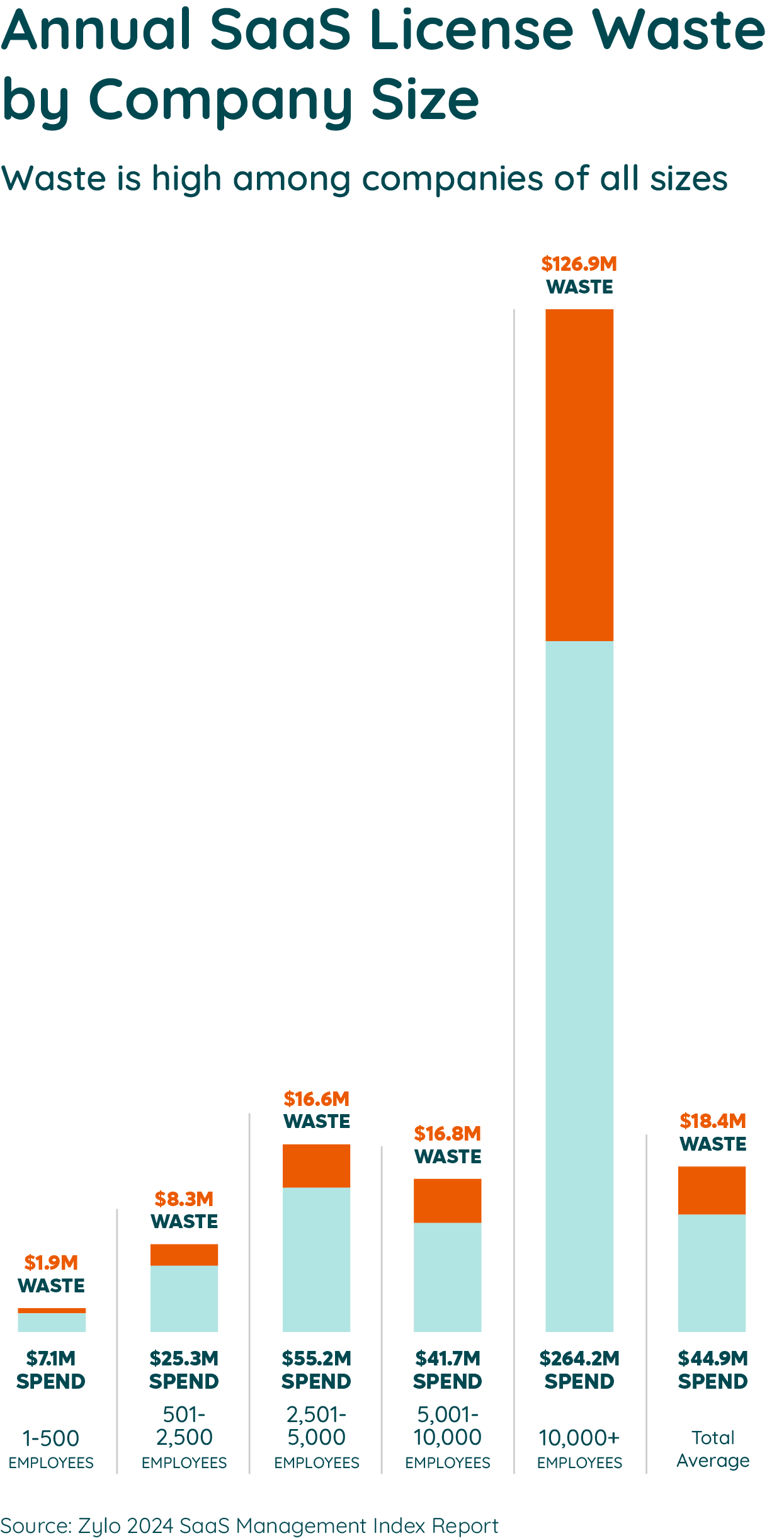 Far too often, organizations underestimate the number of SaaS applications in their tech stack.
Far too often, organizations underestimate the number of SaaS applications in their tech stack.
Without visibility into every piece of software in your environment, it’s impossible to effectively reduce application and license waste, prevent overspending, and stay ahead of security and compliance risks.
Here are a few compelling reasons why you can’t wait to get started:
Don’t let the status quo hold your business back. It’s time to rise above the SaaS chaos! How do you get started? What approach should you take? Learn how three companies shook off the status quo and got started with SaaS Management.

Now that you’ve decided to take control of your SaaS stack and implement effective management practices, you may be wondering what that looks like in practice. Holistic SaaS Management involves inventory, license, and renewal management. This section explains what each is, the problems they solve, and typical use cases for each.
Because much of your SaaS is purchased by individuals and departments – not IT – it’s often a huge blindspot. While you want to get control of the sprawl, spend, and risks, you’re unable to do it at scale. That’s because you can’t manage what you can’t see.
“If you would have asked me two, three years ago, I probably would’ve said we have 100 apps. Now that Genesys has a SaaS Management tool, we know we have over 600.”
— Samantha Griffin, Sr. Software Asset Manager at Genesys
Enter SaaS inventory management – the foundation of your SaaS Management program.
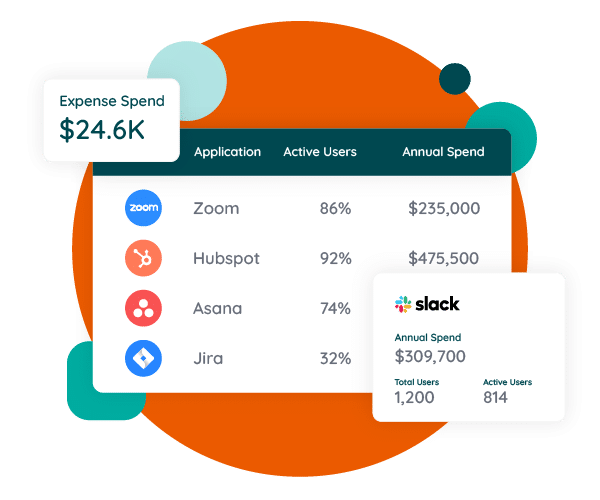 Inventory management is the ongoing discovery of SaaS in your environment and centralization of key application data such as suppliers, spend, app owners, and security certifications. Doing so enables you to implement effective SaaS governance, which helps you control and prevent unsanctioned spending and stay ahead of security and compliance risks. Inventory management is the essential first step that makes license and renewals management possible.
Inventory management is the ongoing discovery of SaaS in your environment and centralization of key application data such as suppliers, spend, app owners, and security certifications. Doing so enables you to implement effective SaaS governance, which helps you control and prevent unsanctioned spending and stay ahead of security and compliance risks. Inventory management is the essential first step that makes license and renewals management possible.
IT teams often lead the charge regarding inventory management – while SAM teams get involved at the enterprise level. Inter-departmental cooperation ensures company-wide visibility and continued program success.
By practicing good SaaS Inventory Management, you can:
Genesys Leverages SaaS Management to Further Digital Transformation
See how the leader in cloud customer experience and contact center solutions reinforces software asset management and enterprise architecture with Zylo.
Underutilization and waste is pervasive throughout your SaaS inventory. Our data shows that the average company only uses 49% of its SaaS licenses, leaving the remaining 51% ripe for optimization. That equates to $18M in wasted spend annually!
The need for regularly managing and optimizing your licenses has never been more important. That brings us to the second pillar of SaaS Management: license management.
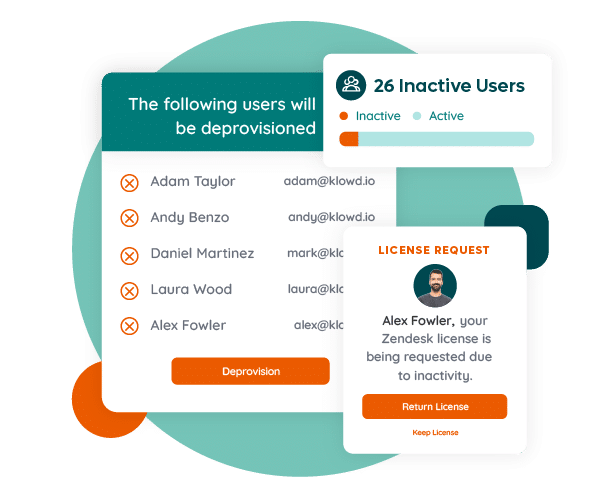 SaaS license management oversees the full life cycle of a software license, from onboarding to offboarding. It enables you to maximize software adoption, avoid unnecessary costs, and drive efficiencies across your tech stack. Depending on the size of your organization, you may see a combination of IT, SAM, or Procurement involved in license management.
SaaS license management oversees the full life cycle of a software license, from onboarding to offboarding. It enables you to maximize software adoption, avoid unnecessary costs, and drive efficiencies across your tech stack. Depending on the size of your organization, you may see a combination of IT, SAM, or Procurement involved in license management.
For instance, Adobe has developed its software management program with license optimization in mind. Ash Rai, Director of Software Asset Management, shared, “Zylo allows us greater insights into our software usage. We harvest software licenses, resulting in millions of dollars in cost avoidance. And this data also allows us to build better strategies for contract renewals and negotiations.”
A comprehensive license management strategy allows you to:
Adobe Drives Innovation and Massive Savings with Zylo
In the past 4 years, Adobe has rapidly scaled from $9B to $18B. This growth has made an already complex environment even more complex. Learn how they leveraged Zylo to get complete visibility into their SaaS portfolio, unlock millions in cost savings and avoidance and improve the employee experience.
In most companies, SaaS renewals occur without any sort of structure. Auto-renewals, click-through terms, and lack of benchmark data leave you ill-prepared and overpaying for software. The average organization has more than 200 renewals a year – that’s about one per business day!
With that many renewals, it can feel impossible to keep up. That’s why renewal management is the critical third pillar of SaaS Management.
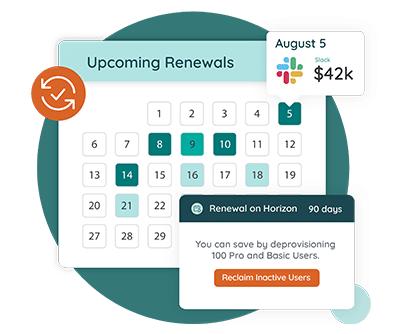 SaaS renewal management is the process of renewing a software contract from strategy and preparation to negotiation and acceptance. The right framework enables you to proactively and programmatically manage renewals, negotiate the best price, and save money – and ultimately make more intelligent and confident renewal and purchasing decisions.
SaaS renewal management is the process of renewing a software contract from strategy and preparation to negotiation and acceptance. The right framework enables you to proactively and programmatically manage renewals, negotiate the best price, and save money – and ultimately make more intelligent and confident renewal and purchasing decisions.
Renewals typically fall under the purview of Procurement or IT, depending on the size of your organization – and even Software Asset Management at large enterprises.
Karen Hodson, Global Procurement & Real Estate Officer at Marigold, believes proactive renewal management starts with visibility. Hodson shared, “The visibility into your SaaS data allows people to take action. And when you can take action based on information, you’re making decisions that will then result in savings.”
A streamlined process for renewing SaaS subscriptions will:
Marigold Uses Zylo to Save on Sprawling SaaS Costs & Streamline M&A Technology Integration
Discover how Marigold unlocked the door to nearly $1M in SaaS cost savings with Zylo, while undergoing a M&A tech integration and cutting software waste from their portfolio.
Now that you know what SaaS Management is, why it’s important, and what it helps you accomplish, how do you start your program?
Before we jump into the steps, you should understand the ‘why’ behind starting your program. Why is it important to you and your business in the first place? For many leaders, that comes to life as an “oh shit” moment that ignites the search for a solution.
Maybe it was the eye-popping amount of SaaS spend you suddenly discovered. Perhaps you experienced a heart-stopping audit. Or (and this actually happened) someone revealed the unsanctioned use of a tool for making cat videos.
Have you had an “oh shit” moment or revelation about the way you’re managing software that needs to change? Start by answering this question for yourself and your organization. Then, read on to understand what effective SaaS Management looks like, who needs to be involved, and tips and best practices for success.
Once you’re clear that you need to take control of your SaaS estate, there are a few requirements before you can get started. Many companies begin managing SaaS in legacy tools or spreadsheets – but these require manual effort and are laden with data integrity risks. Effectively managing SaaS in the long term requires a solid foundation of several elements.
Requirement #1: A system of record
Tools for on-premises software are not equipped to address the unique challenges of SaaS. You need a purpose-built enterprise SaaS Management platform to serve as your system of record and central source of truth. Having your SaaS inventory and all the app, license, and contract data in one place enables cross-departmental visibility and better management and optimization of your SaaS.
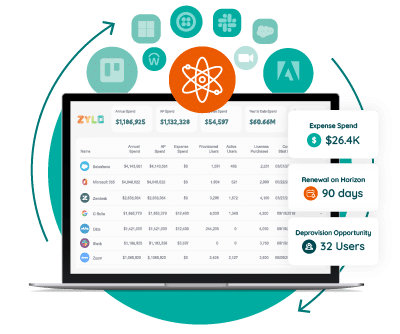 Requirement #2: A discovery mechanism
Requirement #2: A discovery mechanism
The SaaS Management Platform you use as a system of record should have a discovery mechanism that finds all of your SaaS in perpetuity. Legacy software tools are neither equipped as a system of record nor have sufficient discovery mechanisms. Not only does shadow IT go undetected, but business-owned purchases do, too. As much as 51% of expensed software is miscategorized by employees in expense reports.
Requirement #3: Executive sponsorship
Business initiatives that have executive buy-in and top-down support are the most successful. Unfortunately, it can be difficult to rally everyone behind the same SaaS Management strategy.
Come to the conversation armed with facts and figures. You’re not only getting buy-in from the start but driving alignment and accountability for your program. Help your sponsor(s) see how a SaaS Management strategy helps drive growth, enable innovation, and reduce risk – levers to help future-proof your business. That’s certainly something they can get behind.
“Start with finding executive sponsorship – a champion that is able to bring alignment at the highest levels in the company, on the importance of [SaaS Management] and making sure it’s run, it’s funded, it’s kept accountable.”
– Shravya Ravi, Head of Software and IT Hardware Asset Management at LinkedIn
Requirement #4: Alignment with strategic business objectives
When you tie SaaS Management into your company-level goals, it’s easier to drive business value. Depending on your business, that could be a lot of things. We often see companies use SaaS Management to minimize risk, increase software adoption, reduce operating expenses, fund innovation, reduce shadow IT, and drive sustainable business growth – to name a few. In short, understand your strategic company goals and outline how SaaS Management will support them.
Effective SaaS Management involves the strategic oversight and optimization of Software as a Service (SaaS) applications within an organization. This includes implementing policies, processes, and tools to ensure the efficient and secure use of cloud-based software.
As we mentioned before, SaaS Management must be tied to your business objectives. Your organization is unique, so those goals may differ from other companies.
An effective SaaS Management program promotes the following goals:
We see the best results when IT and Finance come together to tackle SaaS Management. This results in three functional roles that make the partnership possible.
Typically, IT and Finance executives establish the vision and goal for the program. VPs or department leaders of IT, Procurement, and Finance develop the strategy and lead the charge. Your day-to-day players can analyze the data and act on opportunities based on everyday use cases.
Get these stakeholders involved to keep the process flowing smoothly:
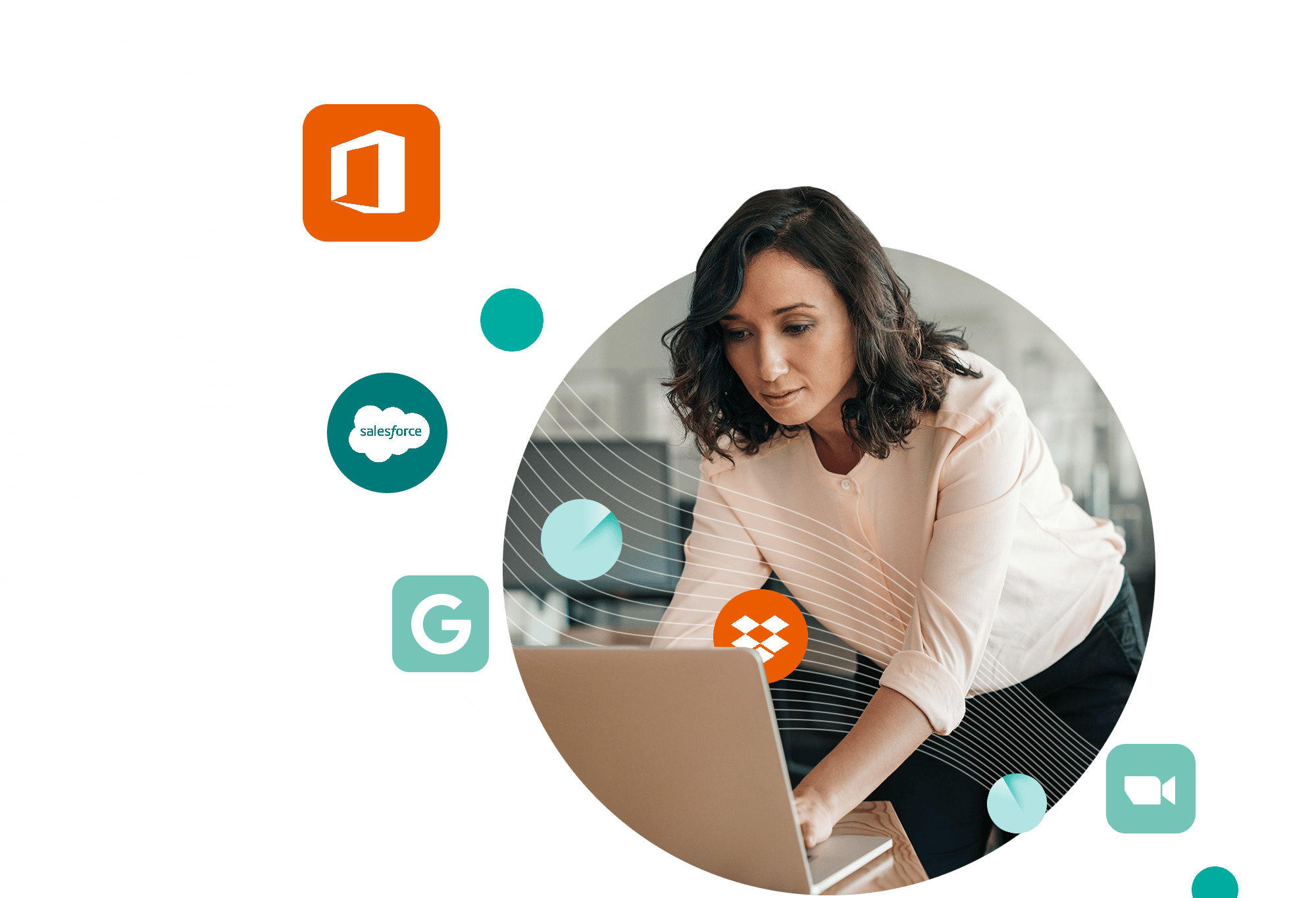
So, you’ve got all your ducks in a row and have involved every necessary department. Now it’s time to start your SaaS Management journey. There are several essential questions to ask yourself about your SaaS stack to understand the extent of your SaaS problems.
The unmanaged growth of SaaS creates uncontrolled costs and increased risk. That’s why you started this process, after all. You need to discover all the apps in your environment and get visibility into each app’s metadata. And don’t forget to put small wins up on the board to strengthen buy-in across the company as you continue the journey.
Along the way, follow these best practices for SaaS Management:
You’ve defined your SaaS Management program – now what? To set your organization up for success, it’s critical you have technology in place to enable it.
Despite recognizing the challenges inherent to managing hundreds (and even thousands) of SaaS apps, most IT and SAM leaders think they have their SaaS stack locked down.
In fact, our latest report found that a surprising 70% think their current SaaS tracking methods are accurate. Unfortunately, 70% of companies are also still using legacy tools (like contract management and SAM tools) or spreadsheets to keep up with their SaaS apps.
Let’s break down the pitfalls of using these approaches to manage SaaS.
Software Asset Management Tools
Traditional SAM tools were built with audit defense in mind. As they evolved, they have tried to incorporate SaaS. While they offer some visibility into your inventory and help you manage licenses, SAM tools only focus on your top-tier vendors.
They also don’t provide the functionality to manage SaaS holistically. They miss the mark on complete and continuous discovery of all SaaS – the foundation of SaaS Management – and don’t even touch renewal management.
Spreadsheets
Spreadsheets have inherent limitations as well. They immediately become outdated, offering only static, incomplete snapshots instead of continuous, comprehensive insights. They also aren’t scalable; as the amount of data grows, they become unwieldy to manage. Maintaining them is labor intensive, and visibility into all your apps remains fragmented at best. Additionally, data silos make information inaccessible to others who need it, hindering collaboration and effective decision making.
These outdated methods just don’t cut it for SaaS. Karen Hodson, Global Procurement & Real Estate Officer at Marigold, and her team used to rely on spreadsheets to manage SaaS. Hodson came to realize that, “The challenge is, inevitably, the moment you create those spreadsheets, they become outdated.”
Steve Gentry, the former CISO at Clari, agrees. “You can’t run forecasting and revenue off of a spreadsheet. Likewise, you can’t run SaaS off of a spreadsheet.”
SAM Tool + SaaS Management Platform = Better Together
Today, SAM tools still prove critical for tracking on-premises software. But as we mentioned, relying on them for SaaS Management leaves holes in overall SaaS visibility. In contrast, SaaS Management Platforms were purpose-built to address the unique challenges of SaaS. That’s why you need both tools to manage and optimize your software stack.
There are two primary gaps found in SAM tools that a SaaS Management Platform addresses:
If you think your IT department can whip something together for you, it won’t be the most efficient solution. Building your own tool doesn’t make sense when it’s so much easier to get one that’s ready-made for your needs.
“On-premises software tools don’t give you the SaaS Management and SaaS visibility that you need. You can’t run with just one tool in the software asset management space.”
– Jason Owens, Sr. Director, Asset Management, Salesforce
As we’ve covered in detail, SaaS Management combines inventory, license, and renewal management. A SaaS Management Platform like Zylo is equipped to address the unique challenges of SaaS and support this holistic approach.
 Inventory management
Inventory management
As we’ve covered, inventory management is foundational to SaaS Management. A SMP gives you a centralized source of truth for your organization to help identify risk, understand spending, and govern your software environment. Zylo’s SaaS Inventory Management solution is backed by AI-powered discovery, categorization, and inventory. These features give you a complete picture of all your SaaS with control and insights to reduce sprawl and risk.
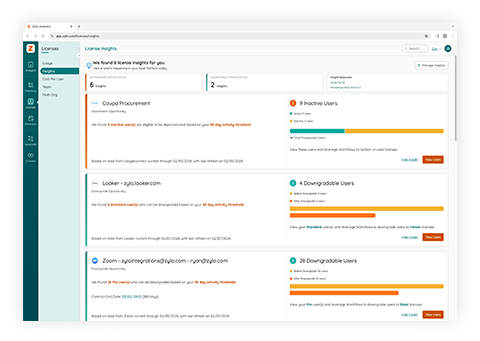 License management
License management
Data is most valuable when it allows you to take action. A SMP puts your usage data to work with insights and automations that make it easier to rightsize and reclaim licenses and rationalize overlapping applications. Zylo’s SaaS License Management solution helps you maximize software adoption and license utilization. The data-driven insights and recommendations surfaced by Zylo allow you to take action to optimize your software investments.
 Renewal management
Renewal management
Renewal is where the rubber meets the road when it comes to cost savings. A SMP enables you to proactively manage renewals, make data-driven decisions, and save money. Pairing your renewal process with Zylo’s SaaS Renewal Management solution helps you make more intelligent and confident renewal and purchasing decisions.
As you explore the best SaaS Management Platform for your business, you’ll encounter certain obstacles. These may include spending freezes, low budget allocation, and reluctant stakeholders. To build a business case for onboarding a comprehensive SMP, you’ll need to present the benefits in ways that appeal to that particular decision-maker’s priorities:
Once you have executive buy-in, it’s a good idea to assemble a buying committee from multiple departments. While there are shared SaaS Management goals, each team has different needs. An IT buyer looks for different features than someone in Procurement or Security. Your buying committee ensures every department gets to weigh in on the decision.
Despite all the challenges of managing SaaS, you can reclaim visibility into and control over your technology stack. Whether you’re in IT, SAM, or Procurement, all SaaS Superheroes possess their own unique superpowers. Yours could be slaying automatic renewals, or guarding the organization from duplicate software applications.
To be the best SaaS-y superhero you can be, you need the best armor, weapons, abilities, and strategy you can get your hands on. Asking the right questions is the first step to putting the right SMP in your superhero arsenal.
Become a SaaS Management Superhero
Learn MoreThe most savvy SaaS Management superheroes will:
Are you ready to take the first step? The biggest enemy of effective SaaS Management is doing nothing. Don’t let the outdated tools and business practices hold your business back.
Ready to wrangle your SaaS stack into line? Discover how some of the leading enterprises are practicing effective SaaS Management and driving business impact.

Table of Contents Toggle Outdated Tools and Process Just Don’t Cut It...
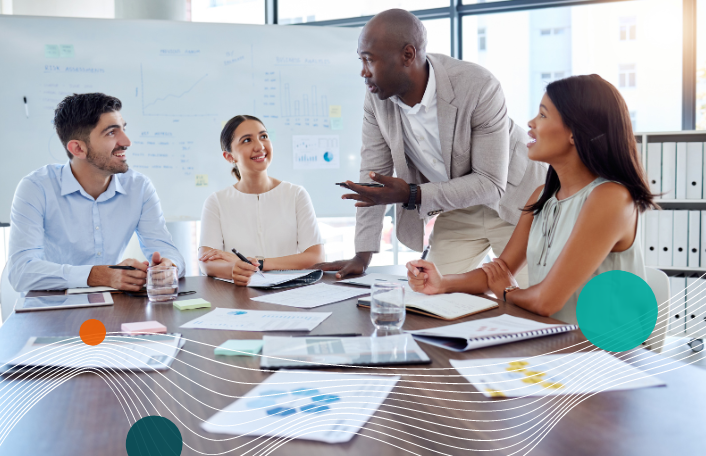
Table of Contents ToggleWhat Is FinOps?How SaaS Fits into FinOpsAlignment with...

Table of Contents Toggle Outdated Tools and Process Just Don’t Cut It...

Table of Contents ToggleWhy Are Application Owners Important at Renewal?How to...
| Cookie | Duration | Description |
|---|---|---|
| cookielawinfo-checkbox-analytics | 11 months | This cookie is set by GDPR Cookie Consent plugin. The cookie is used to store the user consent for the cookies in the category "Analytics". |
| cookielawinfo-checkbox-functional | 11 months | The cookie is set by GDPR cookie consent to record the user consent for the cookies in the category "Functional". |
| cookielawinfo-checkbox-necessary | 11 months | This cookie is set by GDPR Cookie Consent plugin. The cookies is used to store the user consent for the cookies in the category "Necessary". |
| cookielawinfo-checkbox-others | 11 months | This cookie is set by GDPR Cookie Consent plugin. The cookie is used to store the user consent for the cookies in the category "Other. |
| cookielawinfo-checkbox-performance | 11 months | This cookie is set by GDPR Cookie Consent plugin. The cookie is used to store the user consent for the cookies in the category "Performance". |
| viewed_cookie_policy | 11 months | The cookie is set by the GDPR Cookie Consent plugin and is used to store whether or not user has consented to the use of cookies. It does not store any personal data. |
